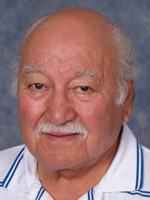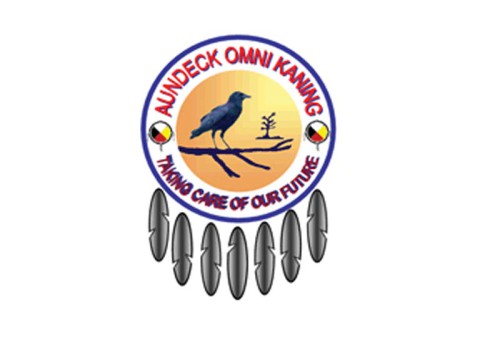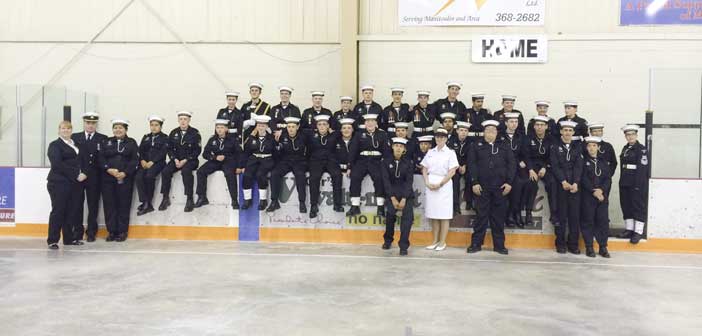EDITOR’S NOTE: Dr. Cecil King, an Odawa from Wikwemikong, has spent 50 years in education as a teacher, professor, researcher, consultant and teacher of teachers. Dr. King founded the Indian Teacher Education Program, University of Saskatchewan and was the first Director of the Aboriginal Teacher Education Program, Queen’s University. He served as Head of the Indian and Northern Education Program, University of Saskatchewan and the Dean of the Saskatchewan Campus of the First Nations University of Canada. His language is his first love. He has taught Ojibwe at the University of Saskatchewan, Stanford University and the University of Alberta. He has developed Ojibwe Language Programs in Ontario, Saskatchewan, Manitoba, Minnesota, Chicago and California and has produced an 8,000 word Ojibwe dictionary.
Dr. King is Professor Emeritus, Queen’s University. He is the recipient of Queen Elizabeth’s Golden Jubilee Medal, the Saskatchewan Centennial Medal and the 2009 National Aboriginal Achievement Award for Education.
by Dr. Cecil King
I was one of the lucky ones. I survived residential school. However, I believe it had more to do with my schooling at home and in Buzwa School than in the residential school experience. I did not get on that big black bus that picked children up to go to Garnier Residential School until I was ready to start high school. I had passed the provincial Grade 8 entrance exams in Manitowaning. Liza Jane Pelletier, my Grade 8 teacher at Buzwa School, had made sure that I knew what was necessary to know to continue to high school. My grandmother had been a teacher and insisted that I learn English well at home.

We had had three caring, competent First Nations women teachers at Buzwa School: Christine Wakejijig, Rita Trudeau and Liza Jane. This was my experience with school teachers before meeting the Jesuits. There were many teachers in our community. My grandfather, John King, a skilled craftsman, had taught me how to make things and do manual labour. Many of these skills saved me at Garnier because the priests were notoriously inept at doing the things that were needed to keep a building as large as the school maintained and operating at full efficiency. I immediately became part of the Maintenance Department. This kept me busy in the building and out of the barns. This was a good thing because I hated farming. So I built things like a green house, and a tabernacle without any plans or instructions. I put on and took off storm windows on the four storey building. I made props for the concerts and operettas that we produced.
One winter Julius Neganijig, from Sheguiandah, and I made little white crosses and monuments to stand them on. This was our tribute to the little ones who died. Most of the kids who died while I was there died of TB. When Julius and I had finished the crosses, we had to take them to the cemetery up the hill and erect them at the graves that the brother had indicated with a rock. We did not put names on the crosses because we were not told who they were for. I never knew who was in the grave under the cross.
I learned the name of one of those who received one of my crosses. One year when we returned to the Island on the big black bus, we delivered the students to their homes. I remember the whole Ozawamique family was waiting by the side of the road. The bus driver stopped and Mr. Ozawamique asked for his daughter. The bus driver didn’t know anything but one of the nuns who was on the bus with us told the family that the little girl had died. I will never forget the look on the faces who had been waiting excitedly to welcome their little one back home.
Many students tried to run away from Garnier. Many were a long way from home. We had classmates from up the North Shore as far as Thunder Bay and as far south as Kanawake, Quebec. Being from a Catholic reserve was the major criterion for acceptance to the school. Of those who ran away while I was at the school, only one was successful. Others were caught. They were strapped, long and hard. Their hair was cut off. They had to eat alone and all privileges were taken away. Most of these were little boys who were already lonesome and miserable.
The boys’ school and the girls’ school were only a few hundred yards apart. However, it was impressed upon us that it was a sin for us to go to the other school. Many of us had sisters at the school. We were not allowed to have any contact with them. What I remember most is the little girls’ faces pressed against the windows of the girls’ school when we went by on our walk on Thursday afternoons. Sometimes my sisters would be at the window but often they were not because there was a fight among the girls for the front places. Those glimpses were the only connection we had with our family during the school year.
At Buzwa School, I had not learned the need for the strap as a tool for learning. Our teachers had motivated us to learn with other means. At Garnier, it was assumed that appropriate behaviour would result from the appropriate sized strap being applied the appropriate number of times on the appropriate part of the boy’s anatomy. The punishment was applied until the boy cried out. If you cried out right away, it would stop. If you gritted your teeth and were defiant, the strapping went on and on.
Religion was the first class of the day. We were taught that we were sinners and had no hope of going to heaven. We had to be convinced that we were sinners so that the Church could save us. Every fall there was a 30-day retreat to expunge us of the involvement of our people in the murders of the priests at Midland and to convince us that the martyrdoms were our fault. We were told our ancestors were “les sauvages” and this was the proof.
I was lucky. I had learned that I was Odawa from my grandfather. His brother, Charlie King, still knew the old songs and led a drum group. My grandfather had taught me about the three brothers Ojibwe, Odawa and Potawatomie who together were the Anishnabek. Kokwehns, the traditional old lady who lived with us, had shown me what medicine plants to pick, how to make them into medicine and other practical things which our people had learned through living off the land. I was not prepared to hang my head when I was called “un sauvage.”
While we were all aware of the severe penalties for ignoring the rules and defying the priests, we had our own subculture which made life bearable. I learned to speak Ojibwe in the basement of the school. I found that my English skills did not make me popular with the other boys who for the most part came from communities where Ojibwe was still the first language. We developed a subculture which operated out of the basement, in Ojibwe. We had a system of barter where each of us exchanged the items taken from our place of work with someone else who had something we needed. Those working in the bakery had bread to barter for butter from those working in the creamery. The most prized trade good was the priests’ tobacco which a member of our crew would capture from the priests’ residence after the first call to the dining room ensured that the priests’ tobacco was unattended.
We found ways to adapt to the structured system of the residential school. We used our language as a means of passing plans without being detected. We used our natural trading skills to satisfy our individual wants and needs. After all, Odawa means “trader.” We used our knowledge of living off the land to assess the landscape of the residential school. We knew every nook and cranny and where everything was kept. We soon learned how to pick locks to get what we needed.
Life in Garnier Residential School was a balance of academic opportunity and making a life that we could live true to ourselves.
The Truth and Reconciliation Commission
The Truth (Debwehwin)
“Debwehwin” is one of the Seven Grandfathers, the teachings of the Anishnabek. It is one of the core beliefs of the Anishnabe worldview. The First Nations students knew their truth. Basil Johnson wrote ‘Indian School Days,’ which was discredited by the Jesuits and some academics. The truth of the students had to fit into a theory or it was discredited. When I told one researcher that I was not sexually assaulted in Residential School, she told me that I must be in denial. Another researcher interviewed me for hours but never used anything because I didn’t agree with his theory. It has been difficult to inject our varied stories into the dialogue. We are hopeful that our truth will now be part of Canadian history.
The Commission has recommended a national curriculum teaching all the school children in the country will learn about us. This is a noble endeavour. This has been my life’s work. I have been an educator for almost 60 years. A provincial superintendent of education, Mr. Mingay (I remember his name to this day!) gathered the Grade 12 students in Garnier and suggested career choices for us. He told me I would make a good teacher. This was a surprise because we had never been told what we would be good at except for a couple of boys whom the Jesuits thought might become priests. I took his advice and have been a teacher ever since.
I have seen important changes in the schooling of our children. I was a teacher of teachers at university for many years and found that when non-aboriginal teacher trainees learned our worldview and history from our perspective, they were more ready to teach our children. When you taught them that there were different ways of looking at the world, it opened their eyes to the issues we face to this day.
However, changing the school curriculum takes a long time. It will be another 20 years before the new curriculum about us has any impact on societal views. I have been involved in these changes. It is not enough. The most frustrating lack of knowledge which I have encountered has been among the bureaucrats in federal and provincial departments whose task it is to make policy about us or for us. The positions either have people who have had the same knowledge about our people since they joined the department 20 years ago and have hardened their views as a result or they are young with no experience with our people or interest in learning. I got very tired of having to re-educate bureaucrats at each meeting before we could get down to business. It would move the relationship ahead if we could meet with government people who might disagree with our position but who at least knew the basic facts about who we are.
Recommendation: Start the intensive re-education of Canadians not at the Kindergarten classroom but in the Cabinet Room with the prime minister and his cabinet followed by the deputy ministers and through the whole departmental staffs. Not to forget the clerks and frontline staff who meet First Nations, Innuit and Metis clients on a daily basis.
Reconciliation
There are many English words for reconciliation. Generally it means bringing two things or groups which have been disagreeing, together. The term is used for finances and there is even a legal definition relating to aboriginal rights and modern treaty negotiating. These meanings don’t deal with human feelings and experience. Reconciling people who have been estranged is a process. The Truth and Reconciliation Commission has provided venues where pain and hurt could be revealed and acknowledged. Some victims have come face to face with their anger.
In Ojibwe we have words for reconciliation too but they are different from the English meanings. “Aashtahwehwin” means “doing it back,” or having an opportunity to do it again. “Aashtahwingging” means the art of “doing it back.” This is what the Truth and Reconciliation Commission has offered us. Many have had the chance to tell their stories. Some have been able to confront the ones who hurt them. I remember the first “reunion” organized for clergy, staff and students of the schools at Spanish. This took place about 20 years ago. I went to see my old classmates. However, for many it was not a reunion in that sense. Many of the students had come to confront their old teachers. The administrators were totally surprised by the anger and hurt that the students wanted to talk about. I particularly remember that some of the girls wanted to physically challenge one of their supervisors in retaliation for the pain she had inflicted on them. There have been subsequent “reunions” and the anger is over and reconciliation is taking place. It seemed that those running our schools were so convinced of the value and importance of what they were doing that they were oblivious to the students’ perceptions and it was only when they acknowledged the students’ feelings that reconciliation could occur.
There is another Ojibwe word, “Bonnigi deh taadewin” which literally means “the process of pushing the badness out of your heart.” It seems to me that this is really what we should strive for. We can put on programs and teach courses but the reconciliation will not begin until we all come together with our hearts. Let’s stop dialoguing from the mind and start speaking from our hearts. The Truth and Reconciliation Commission has started the process. Many of our elders have spoken from their hearts for the first time. We must demand that their courage be respected and that Canadian politicians, bureaucrats and the general population speak from their hearts as well. That is the only way that the lives of the little ones will be honoured.
Meegwetch. Meen dikodohnun. Thank you. These are my words.





